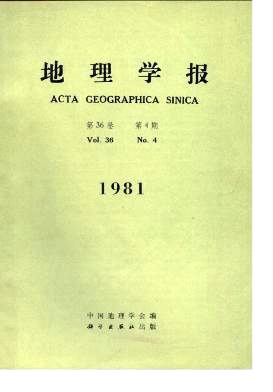She Zhixiang, Chen Yue-e, Tang Zhenfu
This article deals chiefly with the fundamental features of the agricultural produc-tion and land utilization on the Taihu Plain, with speeial reference to the following two topies:1 The- farming system is closely related to land utilization. After many years ofdevelopmem. almost all of the land on the Taihu Plain have been exploited, and nowthere arc no large plots of uncultivated land left on the plain. Therefore, the only wayto develop the agricultural production is to raise the per-unit yield. From 1965 to thebeging of the seventies after a period of 6 years’ development and reformation),the triple-cropping system (i.e. wheat, or rapes, green manure-double harvest rice) hasbeen widely popularized, instead of double-cropping (rice-wheat). The per-mu grainyield has been increased from 800-900 jin to 1.200-1.800 jin; as a result, the utiliza-tion of farming land lias reached a new stage. For the present, the Taihu Plain hasbecome one of the largest areas under double-cropping of rice and triple-cropping systemin our country. This Ligh intensive farming system has many advantages, e.g. (1) tohave a very high land productivity; (2) to make full use of the labour resources inthe countryside and (3) to increase grain yield to a greater extent. At the same time,a number of problems came to the open. For example, in time of harvest or planting,there is an acute shortage of manpower, a tendency that the physical property of soilgoes deteriorization, the quality of grain is therefore getting worse; and it is impossiblei’ur the peasants to effectively increase their incomes and so on. Our present task isbound to sum up experience mentioned above, so as to try to find out a scientific ap-proach to the development of a farming system which is fit even better for physical andeconomic condition as well as for the increase of production and incomes.2) A few hills scattered sporadically around the Taihu lake they are rich in va-rious kinds of fruit and perfume, such as orange, loquat, myrica, chestnut, plum, per-simmon, peach, apricot, pomegranate, ginkgo, jujube, osmanthus and a few rose. Theeconomic condition is flourishing in this countryside. Being affected by the marketprices in different periods, there is a definite relationship of growth and decline of therelative area between different kinds of fruit and the structure of the land use has beenchanged evidently. Judging from the tendency of the past years, the plantation oforange is fast growing. On the Taihu Plain, heat conditions meet fundamentally the re-quirements of early-ripening and cold-resistant species of such fruit. However, it is notalways the case. In view of the existing instability of orange-growing at the hilly areasof Taihu Plain, great importance should be attached to the microclimatic difference.This plays a very important part in the selection of suitable area for orange cultivation.On the basis of analysing physical and economic condition, the suitable best areas fororange-growing have been selected.
